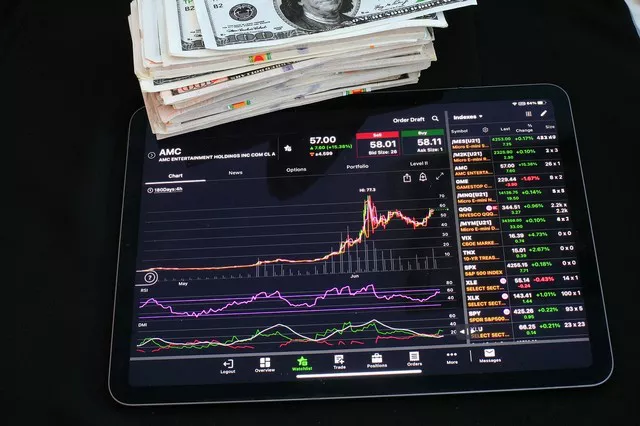In the ever-evolving landscape of financial markets, stock futures stand as a powerful barometer that investors and traders closely monitor to glean insights into market sentiment and potential price movements. The movement of stock futures holds a significant role in guiding investment decisions, shaping trading strategies, and gauging the broader outlook for various market sectors.
1. The Fundamental Nature of Stock Futures
Stock futures are derivative contracts that provide market participants with an avenue to speculate on the future price movements of individual stocks or entire stock market indices. These contracts encapsulate the anticipated value of the underlying assets at a specified future date, offering a forward-looking perspective that can influence the course of investment and trading activities.
2. Market Sentiment and Expectations
One of the primary roles of stock futures is to reflect market sentiment and expectations. The movement of stock futures indicates how investors and traders collectively perceive the future trajectory of specific stocks or the broader market. When stock futures rise, it suggests a prevailing belief that the value of the underlying assets will increase, while a decline in stock futures signals a more bearish outlook.
3. Leverage and Investment Potential
Stock futures provide an opportunity to leverage investment potential. With a relatively small initial investment, traders can control a larger position in the underlying stocks or indices. This leverage magnifies both gains and losses, making stock futures an attractive tool for traders seeking amplified exposure to market movements. The movement of stock futures influences the level of leverage traders can access and impacts their risk-reward dynamics.
4. Gauging Market Volatility
Volatility is a hallmark of financial markets, and stock futures play a role in gauging market volatility. A significant movement in stock futures, whether upward or downward, can indicate periods of heightened volatility and uncertainty. When stock futures exhibit rapid fluctuations, it often suggests that traders and investors are reacting to news, economic data releases, or geopolitical events that have the potential to impact the market’s direction.
5. Impact on Investment Decisions
The movement of stock futures has a direct impact on investment decisions, especially for individuals and institutions with exposure to the underlying stocks or indices. Investors may consider adjusting their portfolios based on the direction of stock futures. A rise in stock futures may prompt investors to hold or accumulate positions, while a decline may lead to reevaluations, potential divestments, or hedging strategies.
6. Portfolio Diversification and Hedging
Stock futures offer an avenue for portfolio diversification and risk management. By trading stock futures, investors can gain exposure to a wide array of assets and sectors without owning the actual stocks. Additionally, stock futures can be employed as hedging tools to mitigate potential losses resulting from adverse market movements. The movement of stock futures informs investors about the potential effectiveness of these diversification and hedging strategies.
7. Relationship with Fundamental Analysis
Fundamental analysis, which involves assessing the intrinsic value of assets based on economic indicators, corporate earnings reports, and other financial data, complements the insights provided by stock futures. The movement of stock futures may align with or deviate from the findings of fundamental analysis. Understanding this relationship allows investors and traders to make more informed decisions by considering both technical and fundamental factors.
8. Technical Analysis and Timing
Technical analysis, another critical aspect of market analysis, involves studying historical price patterns and indicators to forecast future price movements. The movement of stock futures can provide technical analysts with signals and confirmations that align with their chart patterns and indicators. By incorporating insights from stock futures, technical analysts can refine their timing strategies and identify potential entry and exit points.
9. Interplay with Economic Data
The movement of stock futures is often intertwined with economic data releases. Positive economic data, such as strong GDP growth, low unemployment rates, and robust consumer spending, can correlate with rising stock futures, reflecting optimism about the broader economic outlook. Conversely, weak economic indicators may lead to a decline in stock futures, reflecting concerns about economic health.
10. Global Impact and Cross-Market Relationships
The movement of stock futures extends beyond domestic borders and has implications for global markets. As international financial markets are interconnected, movements in stock futures can influence market sentiment and trading activities in other regions. A rise or fall in stock futures in one market may trigger ripple effects that impact trading decisions and market sentiment worldwide.
11. The Role of News and Events
News and events, both macroeconomic and company-specific, play a significant role in shaping the movement of stock futures. Earnings releases, geopolitical developments, central bank decisions, and trade negotiations can trigger rapid shifts in sentiment, causing stock futures to move either upward or downward. Monitoring news and events in conjunction with the movement of stock futures helps traders and investors stay attuned to market dynamics.
Conclusion
In the intricate tapestry of financial markets, the movement of stock futures serves as a beacon that guides investors and traders through the complexities of market sentiment, expectations, and trends. By understanding the implications of rising or falling stock futures, market participants can make more informed decisions, adapt their strategies to changing market conditions, and effectively manage risks. The movement of stock futures is a dynamic reflection of market sentiment, economic factors, and global events, offering invaluable insights that inform investment approaches and contribute to the ongoing discourse of modern finance.


